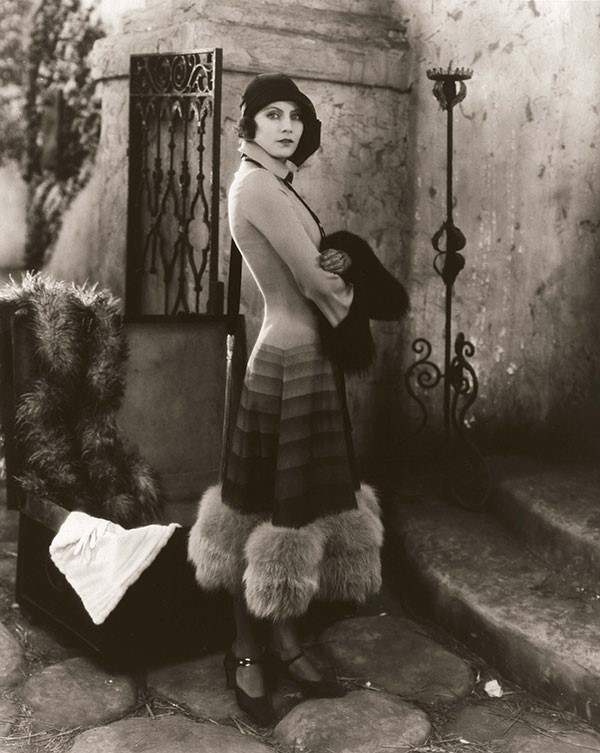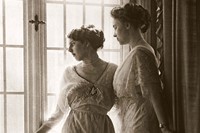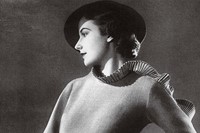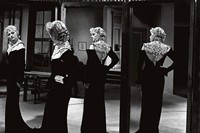What Cameron Silver doesn’t know about fashion history is not worth knowing. Once an actor who began his career performing cabaret songs by Kurt Weil across the United States, this California-born vintage lover turned his passion into business in
What Cameron Silver doesn’t know about fashion history is not worth knowing. Once an actor who began his career performing cabaret songs by Kurt Weil across the United States, this California-born vintage lover turned his passion into business in 1997, when – against all advice – he opened his vintage boutique Decades on Melrose Avenue in Los Angeles. For the past fifteen years, Silver has been dressing the likes of Chloë Sevigny, Michelle Williams and Jessica Chastain, hunting the world for couture from decades past and still finding the time to write a book. Decades: A Century of Fashion is composed of ten chapters, each devoted to the iconic looks of a decade, from Josephine Baker’s 20s extravaganza to Jackie O’s 60s chic or Marc Jacobs’s 90s grunge. AnOther caught up with a newly silver-haired Silver at his book launch in Florence’s Palazzo Pucci to talk history, modernity and timeless style.
What is the idea behind Decades: A Century of Fashion?
When the opportunity to write a book came my way, I had two ideas in mind: I wanted of course to create a coffee table book, filled with beautiful pictures; but I also felt the need to write an essay, something deep enough as to be an academic reference. Decades: A Century of Fashion is also full of irony, since even if I am talking about the 40s, the 20s or the 1900s, I still try to find in every case what made the decade modern. The book was written in the first person, which was a controversial choice, but one that my publisher understood: it was never meant to be an objective history of fashion, but a very personal account of the past century; my own history of fashion.
The book contains many rarely seen images – how did you source them?
Getting the images was a true challenge; that’s why the book took five years to make! I worked together with a great documentalist team, sourcing images from libraries, archives and personal collections, and restoring most of the older ones. It was a fun process, but also demanding and frustrating at times, as beautiful images didn’t always work well with the layout. I had to make a lot of choices.
Your book and your work in general deal with the concept of “modern vintage”. How would you define it?
The last thing I want is clients to come to Decades to look like they are dressed in a vintage style. I want them to look thoroughly modern and to create new trends. Vintage is inspiring only when it can be reinterpreted and reworked over and over again. I love the idea that someone might be wearing something that is sixty years old and still look totally current. True vintage fans generally understand this and even learn to buy modern clothing much more intelligently. Personally, I try to buy things that I think are important and have longevity. Disposable fashion, although it can support a wardrobe, lacks that magic. I love the idea that clothing is forever.
"True timeless style is about looking of yesterday, today and tomorrow… all at once"
What is true timeless style?
It’s about looking of yesterday, today and tomorrow… all at once. There is also a narrative element to it; timeless looks and the research involved in them inevitably tell stories. But perhaps the greatest thing about a true timeless style is its sense of freedom: it is incredibly liberating not being caught up in a look that is exclusively “of the season”.
Industry insiders often stress the fact that fashion is about looking forward and not back, yet we constantly witness vintage revivals. How do you think the past influences the future in fashion?
Everything looks retro on some level; that is inevitable, especially because innovation is based on contrast with what has already been done. The challenge, though, is to take the past as a starting point to push fashion forward, which is something not all designers know how to do. Some of the current collections seem too vintage to me, even though many people seem to like them for that very reason. One thing is true: there is comfort and certainty in wearing things that are derived from the past.
Can fashion innovate without looking back on history?
I do believe the second decade of the 21st century is looking thoroughly modern, innovation is indeed happening. If the first decade of the century was what I call the “Decades” decade, constantly reviving almost every single style in the past century (from 50s couture to 80s colour patterns and from 20s cuts and fabrics to 60s attitudes), I think this one so far is all about the future. It is still early on, but I think a new aesthetic is taking over.
Comparing the early 30s and today's recession, how does fashion react to an economic crisis? Are the reactions similar between the 30s and now?
There is an interesting comparison to be drawn from both recessions. I think the 30s crash led to innovation and inspiration precisely because of the economic restrictions. This seems to parallel what is happening today. Sometimes creativity stems from the lack of material comfort, and the will to change a less-than-satisfying reality originates in an aesthetic movement.
Are we in the midst of a 90s revival?
We are referencing the minimalism of the 1990s but I do think technology in fabric and printing techniques are very fresh. The 90s were about staples and strong architectural statements that managed to avoid the excess of the 1980s. In this decade, I think we are mixing 90s minimalism with a new rococo aesthetic. It certainly feels more luxurious than the past.
You have been working on your own TV show lately… What will it be about?
It is an inside look on Decades, a sort of reality show which will mix a lot of information about the industry and a bit of a fashion history lesson with a touch of the lifestyle of the rich and famous (after all the boutique is located in Los Angeles!). I don’t think I’ll watch the show, as I’ve already lived it, but I do hope it will be funny… mainly because I’m silly.
Decades: A Century of Fashion is out now, published by Bloomsbury.
Text by Marta Represa
Marta Represa is a freelance writer specialising in fashion, art, photography and culture.



